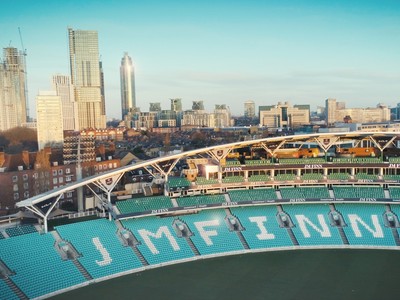Since then the British company has broadened its expertise to match the specialty chemical needs of the moment.Today, JM is a multinational company split into four divisions: Clean Air, Efficient Natural Resources, Health and New Markets.
The Clean Air division accounts for 60% of group revenues, developing and producing emission control technologies with a particular focus on catalytic converters for automotive vehicles. Catalytic converters reduce or eliminate harmful emissions produced by combustion engines. JM is the market leader in catalytic converters fitted to light duty trucks and heavy duty diesel vehicles. The Clean Air division might appear to be a beneficiary of progress towards a lower emission world, but the continued phasing out of combustion engines entirely (particularly diesel engines in Europe) is expected to reduce revenue in the medium to long term.
In 2020, the Clean Air division saw a decline in revenues as the automotive industry came to a standstill due to COVID restrictions. However, in the near term, increased emission regulation globally does play in its favour. Therefore, the longer it takes for electric vehicles to replace traditional vehicles, the better for the Clean Air division.
The Clean Air division also highlights one of JM’s competitive advantages: their expertise in catalysis chemistry. Catalysts are substances that accelerate chemical reactions without being used up, and so can be used to materially improve speed, efficiency and sustainability of a chemical process. Catalysis chemistry is widely applicable and catalysts also play a big role in the Efficient Natural Resources (ENR) division.
ENR is JM’s highest margin division and accounts for c. 25% of group revenues. The focus of ENR is the conservation and recycling of scarce resources to “achieve greater efficiency and optimal yields in the use of these natural resources” according to the company. JM’s ENR Division is the largest secondary refiner of Platinum Group Metals (PGM) in the world, extracting PGMs (platinum, palladium, etc) from waste products to 99.95% purity. Much of this refined PGM is then used to manufacture catalysts but some of it is also sold on.
The odd one out is the Health Division, which accounts for c. 5% of group revenues. This division was born out of the use of platinum in medical treatments and now uses JM’s expertise in complex chemistry to manufacture ingredients used to develop pharmaceuticals. Though this business utilises some of JM’s strengths, it does not play a role in their long term strategic vision as a green technology and chemicals company. Furthermore, the division has been contracting since 2015 with a 5YR CAGR (compound annual growth rate) of -21%. As a result, JM announced a strategic review of the Health business in early 2021 citing an objective of maximising value for shareholders. Expectations are for the business to be sold at a valuation c. £2bn, though this is purely speculative.
The market leader in catalytic converters fitted to light duty trucks and heavy duty diesel vehicles.
A potential sale of the Health business would give JM the capacity to focus more heavily on its main long term growth driver, its New Markets division (c. 9% of group revenues). The New Markets division works on a multitude of growing technologies, but the star of the show is Battery Materials. JM are currently in the process of commercialising their enhanced lithium nickel oxide (eLNO) battery cathode material, for use in electric vehicles. eLNO claims 20-25% higher energy density and longer cycle lifetime than the market leading NMC 622 battery material, while also reducing expensive cobalt content. Reducing cobalt is crucial to the progression of battery electric vehicles (BEV) so as to reduce the cost to the consumer; the battery alone accounts for approximately a third of a BEV’s price.
Despite these claims, their concept has yet to be proven at scale. JM have put their money where their mouth is and are developing manufacturing plants in Konin, Poland and Vaasa, Finland (Liberum estimate at a cost of c. £200m each plant). Most recently JM also opened a new battery material plant in Oxfordshire. They forecast the Polish plant will produce a maximum capacity of 10,000 tonnes of eLNO, enough for 100,000 BEVs, with production beginning in 2022.
However, JM is far from the only player in this fast growing market. Competitors have also been developing low cobalt battery materials (e.g. Tesla’s lithium iron phosphate (LFP) battery). Fortunately, the transportation sector is extremely varied and the expectation is that differing battery materials will each be able to find a place. For example, JM have suggested that the eLNO battery will be particularly useful for long range vehicles. There should be room for all competitors to grow as the market grows.
Ultimately, Johnson Matthey’s USP is its established expertise in very complex chemistry that is applicable across a multitude of fields. They have chosen to focus their talents on the global effort towards a greener, more sustainable world. In many ways, we all stand to benefit if they succeed.




